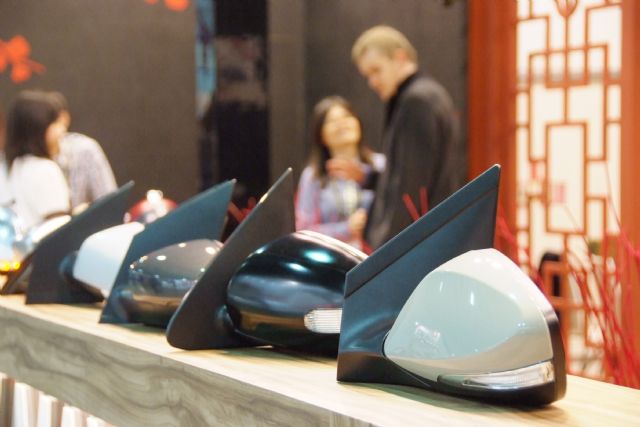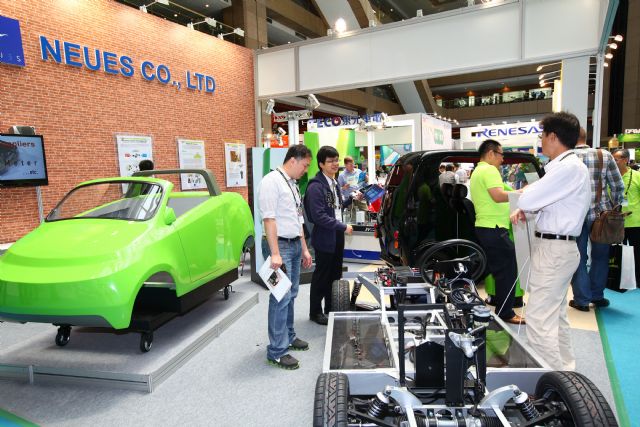Taiwan's Auto-parts Exports Continue to Hit Record High in 2013
2014/08/27 | By Quincy LiangGlobal uptrend in sales of new cars in 2013 has benefited the auto-parts industry in Taiwan, a global-scale production and supply base of aftermarket (AM) replacement items, while an increasing number of companies have been tapping international vehicle makers' supply chains as original equipment (OE) suppliers.
In the first half (H1) of 2013, Automotive Research & Testing Center (ARTC), the key R&D and testing hub for transportation vehicles on the island, says that Taiwan's auto-parts exports once saw a downturn, but gradually recovered into positive growth in H2 thanks mainly to increasing demand from North America, with 2013 exports showing minor annual growth of 1.6%.
For most of the past 10 years, ARTC says, Taiwan's auto-parts exports saw value increases, save for 2009 when the financial tsunami impacted global industries, leading to 8.5% annual decline in local parts exports. From 2010, however, the island's parts exports have risen steadily for four straight years, with values hitting record highs.

Stagnant new-car sales in Europe and tepid economy in the region drove down Taiwan's parts exports in H1, 2013, the automotive center says, which was offset by increasing demand from North America to finally drive up the island's parts export value to a new high of NT$197.9 billion (US$6.6 billion) at year-end.
| Exports of Taiwan-made Auto Parts (2002-2013) Unit: NT$ billion
| ||||||||||||
| Year | 2002 | 2003 | 2004 | 2005 | 2006 | 2007 | 2008 | 2009 | 2010 | 2011 | 2012 | 2013 |
| Exports
| 91.2
| 107.8
| 127.4
| 128.0
| 132.9
| 147.9
| 152.6
| 139.7
| 171.3
| 184.8
| 194.8
| 197.9
|
| Growth
| 15.4%
| 18.2%
| 18.1%
| 0.45%
| 3.8%
| 11.3%
| 3.2%
| -8.5%
| 22.6%
| 7.9%
| 5.4%
| 1.6%
|
| Source: Taiwan Transportation Vehicle Manufacturers Association (TTVMA), ARTC, July 2014
| ||||||||||||
Major Parts Categories
Taiwan is now the most important supply base of AM replacement parts in the world, mainly exporting auto lamps, body parts, rubber tires, side mirrors, wheel rims and other automotive parts and accessories, etc., which together accounted for about 75% of the overall parts exports from the island in 2013. Except the rubber tire, all these major categories saw a growth trend.
ARTC attributes the rubber-tire exports drop to some international orders flowing to Chinese suppliers after the U.S. government lifted its sanction tariffs on China-made rubber tires. On the other hand, the center adds, exports of auto lamps and body parts from the island saw higher-than-average growth rates among major categories, implying the continuously strengthening global competitiveness of such makers on the island.
| Major Product Categories in Taiwan's Auto-parts Exports (2012-2013)
| |||||
|
| Category
| 2012
| 2013
| ||
| Export Value
| YoY
| Export Value
| YoY
| ||
| 1
| Other vehicle parts and accessories
| NT$54.1 billion
| 7.6%
| NT$55.3 billion
| 2.1%
|
| 2
| Rubber tires for passenger cars (including for vans and racing cars)
| NT$20.8 billion
| -0.6%
| NT$20.5 billion
| -1.5%
|
| 3
| Motor vehicle body parts and accessories
| NT$17.4 billion
| 12.6%
| NT$18.4 billion
| 5.6%
|
| 4
| Motor vehicle and motorcycle head and tail lamps
| NT$16.6 billion
| 3.5%
| NT$16.8 billion
| 1.4%
|
| 5
| Motor vehicle and motorcycle illumination equipmnet
| NT$11.5 billion
| 4.5%
| NT$12.9 billion
| 11.8%
|
| 6
| Other wheel rims and related parts and accessories
| NT$10.7 billion
| 13.3%
| NT$10.9 billion
| 1.7%
|
| 7
| Bumpers and parts
| NT$7.9 billion
| -5.8%
| NT$8.7 billion
| 9.2%
|
| 8
| Side mirrors
| NT$4.8 billion
| -2.7%
| NT$5.3 billion
| 10.6%
|
| 9
| Rubber tires for trucks and buses
| NT$3.2 billion
| -4.8%
| NT$2.7 billion
| -14.8%
|
| 10
| Other vehicle parts
| NT$3 billion
| 11.6%
| NT$2.6 billion
| -11.7%
|
| Source: Customs Administration, Ministry of Finance; ARTC
| |||||
North America
North America has been the most important region for Taiwan's auto-parts exports, and continued to maintain its top position in 2013 by absorbing about 40% of the island's parts exports; while Asia (25%-30%) and Europe (about 20%) were the second- and third-largest export markets, respectively.
The top-five major export nations for Taiwan-made auto parts in 2013 were the U.S., Japan, China, Australia and the U.K., which together accounted for 56% of the overall. Export sales to the U.S. were NT$74.9 billion (US$2.5 billion), representing 38% of the total value last year; while that to the U.K. saw a 19% growth, thanks to the clearly increased new-car sales in the nation, making it for the first time to be one of the top-five markets for Taiwan-made auto parts.
Prospects
Taiwan's domestic new-car market has been very limited with annual sales volume hovering at about 400,000 units or lower for many years, forcing auto-parts makers on the island to turn their eyes on exports. The continued increasing auto-parts exports from the island have also made the component industry a major pillar in domestic manufacturing sector.

Taiwan's auto-parts exports continued to increase in the first half of 2014, ARTC says, and are expected to keep such growing trend in the second half in conjunction with the increasing new-car sales in major markets such as the U.S., Europe and China.
However, the automotive center adds, if Taiwan wants to effectively expand its auto-parts exports, which has been increasingly important because most local companies in the business still keep their domestic production and contribute an increasingly big part to the island's economy, the government has to achieve major breakthroughs in free-trade agreement (FTA) talks with other economic identities. On the other hand, ARTC furthers, vehicle electrification is an ir-retraceable trend, in which Taiwanese companies have to get ready as early as possible by developing business deployments in key technologies and systems for electric transportation vehicles.
New technology innovation is urgently important, the center says, because that will decide the future of the island's auto-parts exports, as well as local companies' chances in tapping into global EV makers' supply chains.




